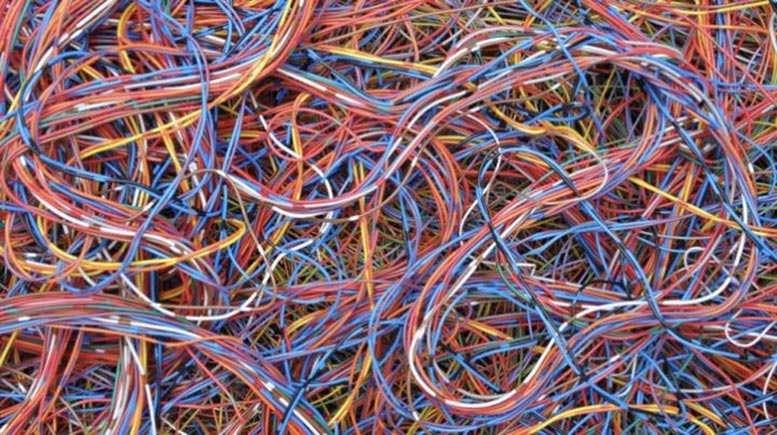
Plastics are essential for making many different components of electronic and electrical products, including phones, computers, TVs, vacuum cleaners, hairdryers, and household appliances. About 20% of all materials in electronic and electrical equipment is plastic. Credit: PolyCE
Consumers asked to favor electronic products containing recycled plastics; firms to build recycled plastic into design, ease plastic recovery for reuse.
A European Commission-funded project supported by the United Nations is calling for consumers to demand electronic and electrical products made with recycled plastic, and for manufacturers to redesign products to both improve recyclability and integrate recycled plastics in new products.
The call is made by PolyCE (for Post-Consumer High-tech Recycled Polymers for a Circular Economy), a multinational consortium led by Fraunhofer IZM and consisting of universities (UN University, Bonn; University of Ghent, Belgium; Technical University Berlin; and University of Northampton, UK), civil society organizations (European Environmental Bureau), and numerous companies — including Philips and Whirlpool. The 20 partners launching the two-year campaign are based or operate in nine countries: Belgium, The Netherlands, Italy, Germany, Austria, Spain, Finland, the USA, and the UK.
According to the Nordic Council of Ministers, plastics account for about 20% of all materials in electronic and electrical equipment (EEE), most of it not designed for recovery and reuse.
Most consumers see no difference in quality, appearance, performance of electrical and electronic products made with recycled plastic. An EC-funded project with UN support urges consumers to favor such products, and manufacturers to include more recycled plastic in product design, and to ease plastic recovery for reuse. Credit: PolyCE
The PolyCE consortium is launching a two-year campaign to raise awareness among consumers and manufacturers in order to change their attitudes towards recycled plastics and improve their market uptake.
Says project partner Kim Ragaret, University of Gent: “Plastics are a valuable resource with a great potential for circularity. Plastics themselves aren’t the problem; our so-called plastics problems relate to attitudes and waste management.”
Plastics are essential for making many different components of electronic and electrical products, including phones, computers, TVs, vacuum cleaners, hairdryers and household appliances.
According to PolyCE consortium experts products can be designed in ways that make material recovery of plastic components easier.
Of the more than 12 million tonnes of e-waste expected next year in Europe (EU, Norway and Switzerland), an estimated 2.5 million tonnes (23 percent) will be plastics.

Of the more than 12 million tonnes of e-waste expected next year in Europe (EU, Norway and Switzerland), an estimated 2.5 million tonnes (23 percent) will be plastics. That’s the weight equivalent of 62,500 fully-loaded 40-tonne trucks — enough to form a line from Rome to Frankfurt — and 2.5 times the 1 million tonnes of plastic landfilled as e-waste components in the year 2000. Credit: PolyCE
That’s the weight equivalent of 62,500 fully-loaded 40-tonne trucks — enough to form a line from Rome to Frankfurt — and 2.5 times the 1 million tonnes of plastic landfilled as e-waste components in the year 2000.
The PolyCE consortium noted a report from Sweden that, globally, just 10% of higher grade plastics from durable goods is recovered and recycled worldwide today, which compares poorly with average 50 to 90% recovery and recycling rates for metals and glass).
The project illustrates through a number of demonstrators that making EEE containing high-quality recycled plastics is economically feasible for manufacturers, and the products are just as long-lasting and durable as those containing virgin plastics. In addition, buying EEE containing recycled plastics offers many other benefits for the environment.
Recycling plastic would not only take pressure off waste systems (in Europe, some 31% of plastic waste still enters landfills while 39% is incinerated) every tonne recycled would also help avoid up to 3 tonnes of CO2 emissions created making new plastic.
A recent consumer survey, carried out by the PolyCE project (link), found that half of respondents didn’t know if they’d ever bought a tech product that included recycled plastic. Of the 25% who said yes to the question, 86% noticed no difference in quality, appearance or performance.
Informed about the health and environmental benefits of recycled plastic components in EEE, 95% of those surveyed confirmed that they’d buy products with that feature.
According to the survey, consumers show high willingness to act in line with the circular economy, but actual engagement is still pretty low, unfortunately. But communication is key.
“The consumer has absolutely vital roles in a sustainable, circular economy and manufacturing system,” says UN University e-waste expert Ruediger Kuehr. “The first is to postpone replacing electronic and electrical products by repairing old ones. And when these products are discarded, recycle them properly — help turn refuse into resources for the sake of the planet’s health and our own. Finally, consumers should favor products made with recycled plastic and use their individual purchasing power to support products that have designed out waste and designed in reused materials.”
Manufacturers, meanwhile, need to improve designs so that a product’s plastic components are more easily recovered for recycling, use recycled plastic in their products, and advertise that feature to consumers.
“Major environmental and financial savings could be achieved simply through better design,” adds Dr. Kuehr. “For some products, such as tablet computers and smartphones, a majority of their manufacturing costs and environmental consequences are the results of decisions made at the product design stage.”
“In the end, realization of a circular economy will be a joint effort between product designers, manufacturers, and material recyclers, as well as consumers.”
As part of the two-year public awareness campaign, short videos featuring both consumers and experts will highlight the benefits of choosing recycled over virgin plastics. One of the first videos is available near the top of this article.
The success of the initiative is relevant to several of the UN’s Sustainable Development Goals, especially SDG12 (responsible consumption and production), SDG 11 (Sustainable cities and communities) and SDG 12 (climate action).
By the numbers
Plastics, EEE (electronic and electrical equipment) and e-waste
Global
- 322 million tonnes: global plastic production, 2015
- 20-fold: increase in global plastic production since the 1960s (expected to double again over the next 20 years)
- 20%: approximate percentage of plastic components in electronic and electrical equipment (EEE)
- 20%: proportion of e-waste recycled globally through appropriate channels, 2016
- 10%: average global rates of recovery and recycling for higher grade plastics from durable goods (compared to 50 to 90% average recovery and recycling rates for metals and glass)
Europe (EU, Norway, Switzerland)
- 49 million tonnes: consumption of plastics in Europe, 2015 (comprised of packaging ~ 40%, building and construction 19.7%, automotive components 8.9%, electronics 5.8%)
- 25.8 million tonnes: plastic waste generated in Europe every year
- 59%: Share of plastic waste in the EU attributed to packaging, 2015 (compared with e-waste 8%, automotive 5%, agriculture, 5%, construction and demolition 5%, household waste other than packaging 4%, other waste, 14%
- Under 30%: plastic waste collected for recycling, of which a significant share leaves the EU to be treated in third countries, where different environmental standards may apply
- 12.3 million tonnes: total e-waste generation, Europe, 2016 (with a growth rate of 3-5 % expected by 2020)
- 2.7 million tonnes: amount of plastic in electronic products put on the European market, 2015 (rising to an expected 3 million tonnes by 2020)
- 2.5 million tonnes: expected amount of plastic in European e-waste, 2020 (up 2.5 times from the 1 million tonnes of plastic in e-waste, year 2000)
- 16.6 kg: current average per capita e-waste generation, Europe
- 31% (falling over the past decade): proportion of Europe’s plastic waste that enters landfills
- 39% (rising): proportion of Europe’s plastic waste that is incinerated
- Up to 3 tonnes: estimated amount of CO2 emissions avoided per tonne of plastic recycled
- 80%: energy saved when plastic is recycled rather than manufacturing plastics from virgin materials
- 20%: reduction of an EEE product’s environmental impact if manufactured with recycled rather than virgin plastic
- 80%: the degree to which product design decisions affect its environmental impact
- 90%: the degree to which product design decisions affect its manufacturing cost

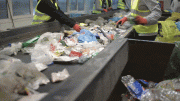
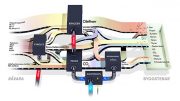
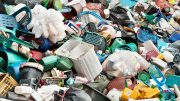
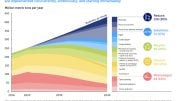




thanks for this
Yes. I support the fact that we are very dismissive of everything around us. We must do everything in our power to preserve nature. And the minimum that we can do is to postpone the replacement of electronic and electrical products for the repair of old ones, just regular washer maintenance, this will not only have a positive impact on the environment, but also on your budget